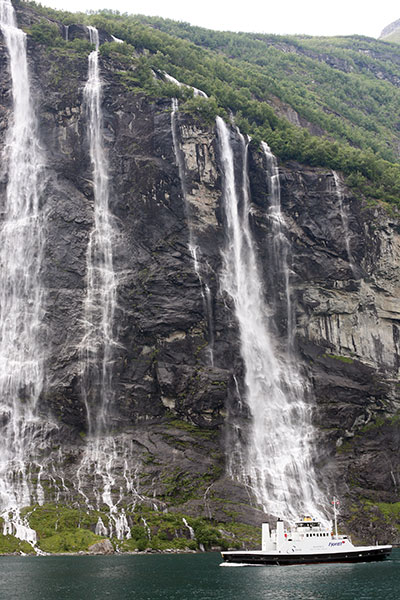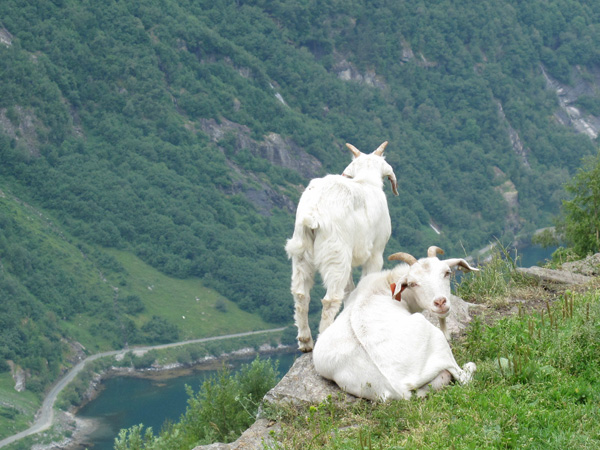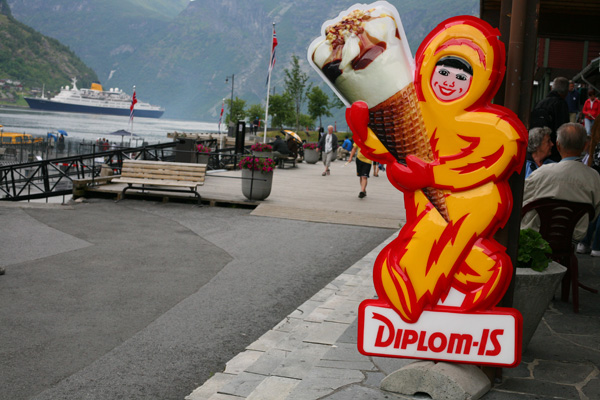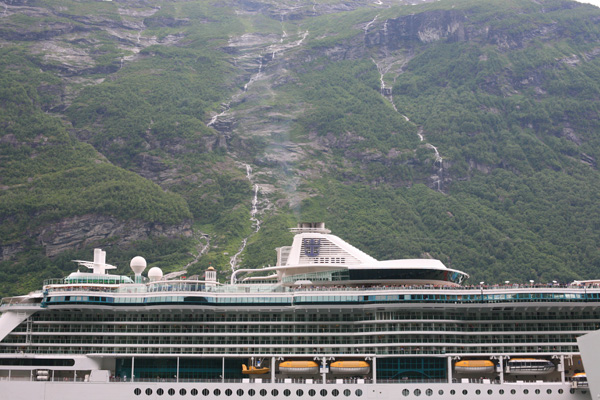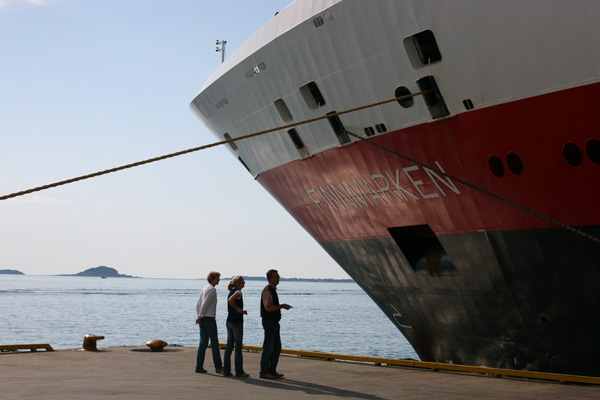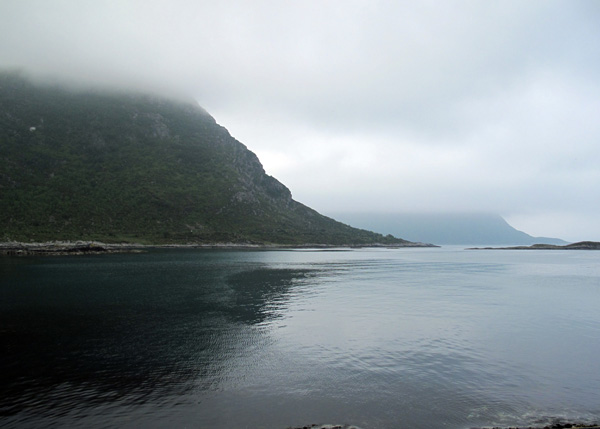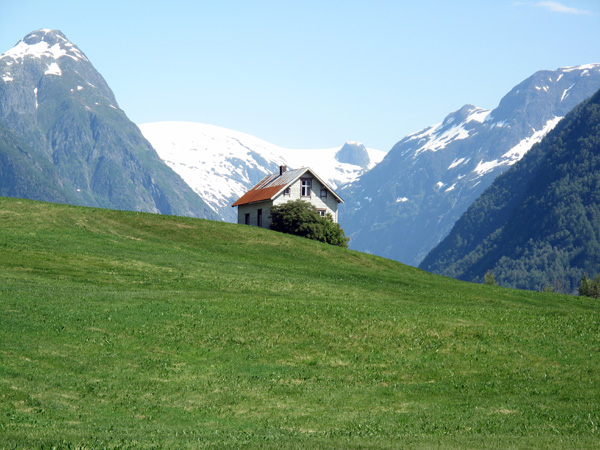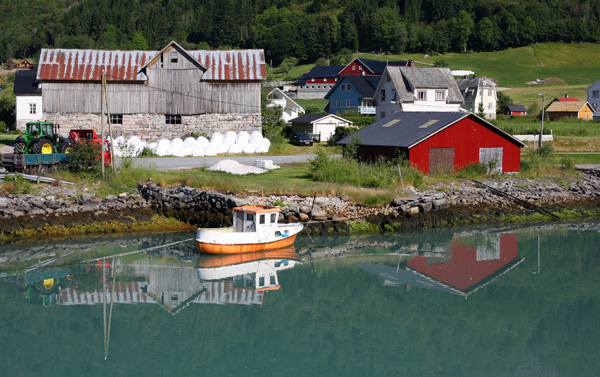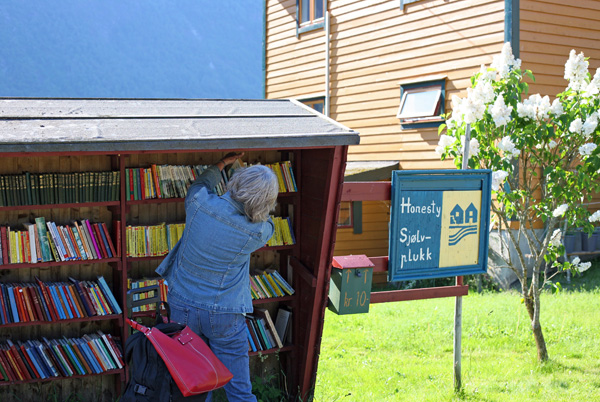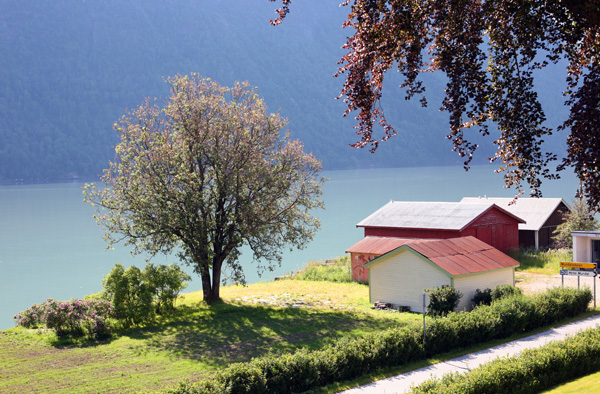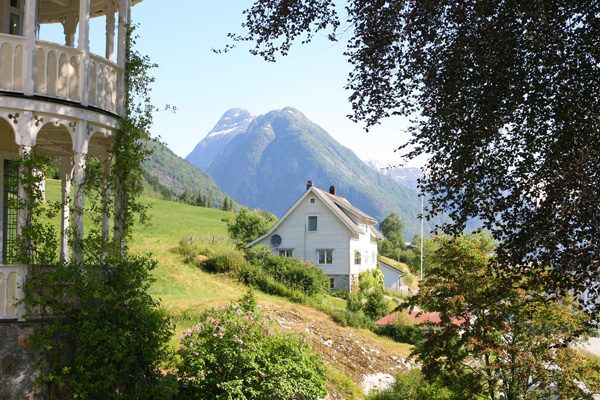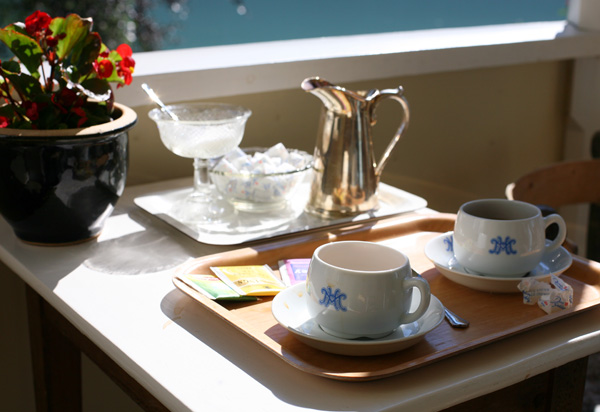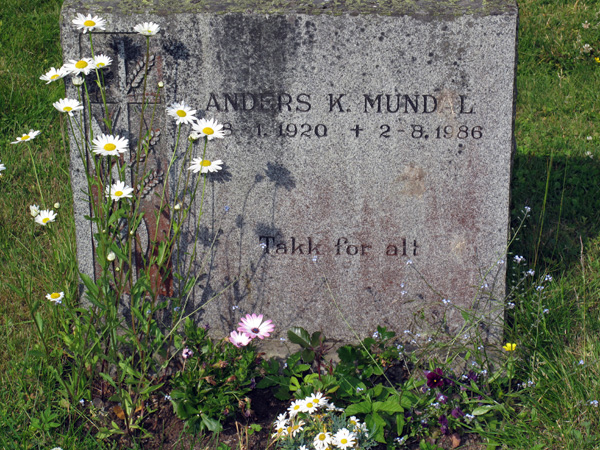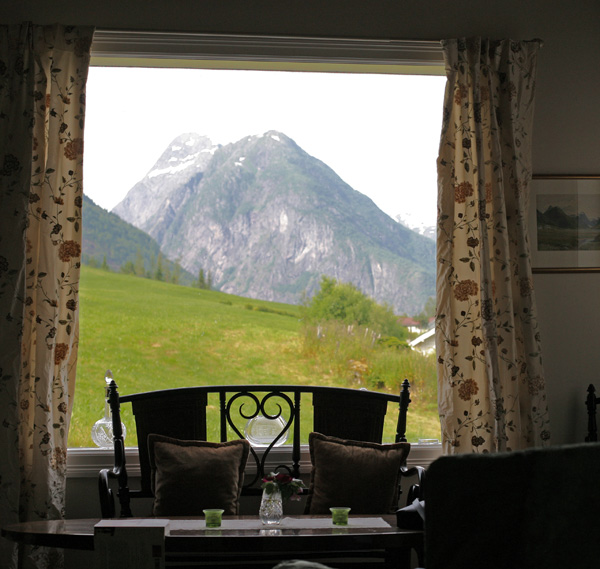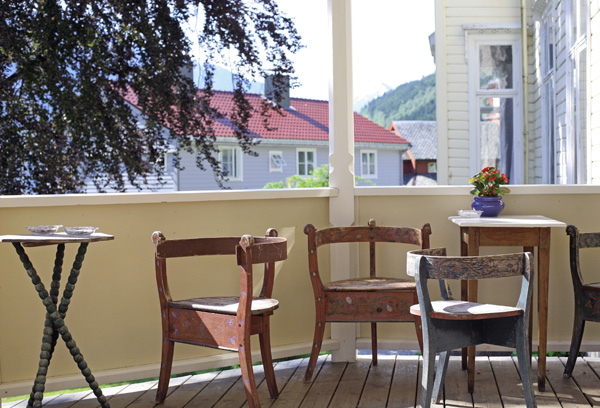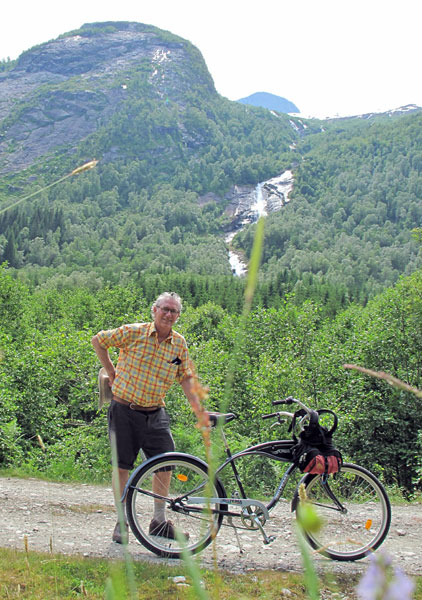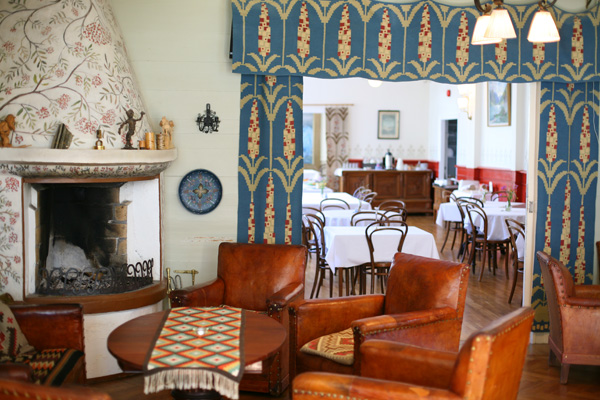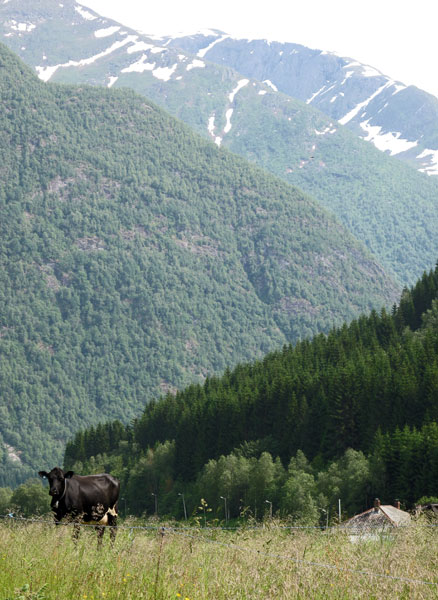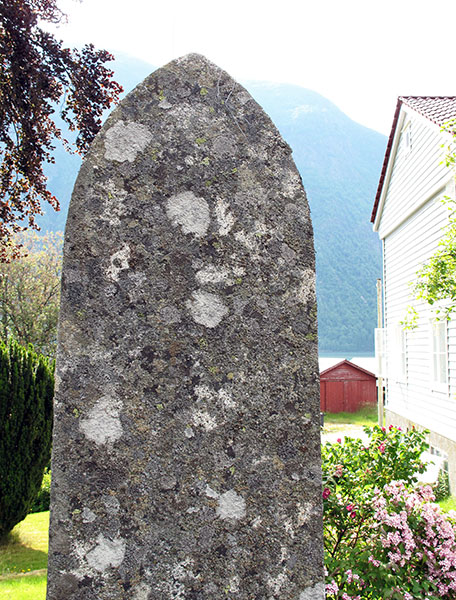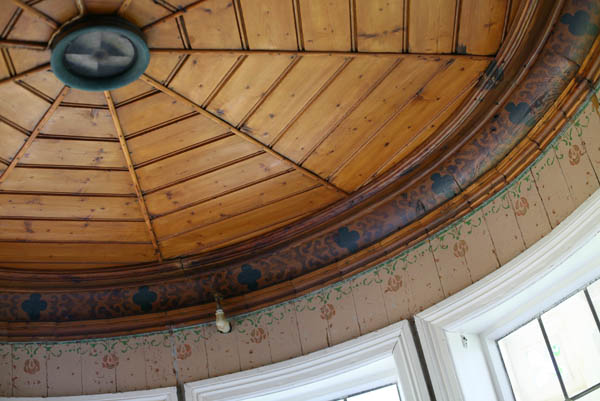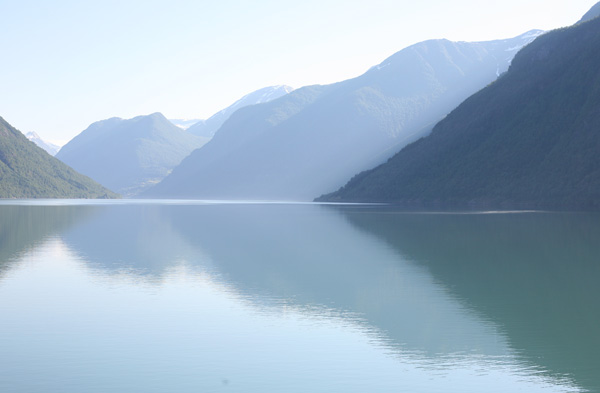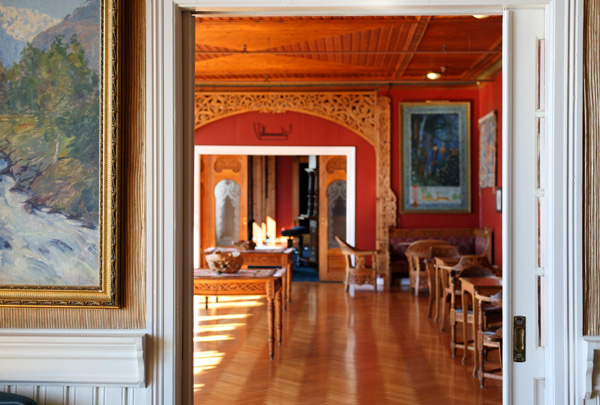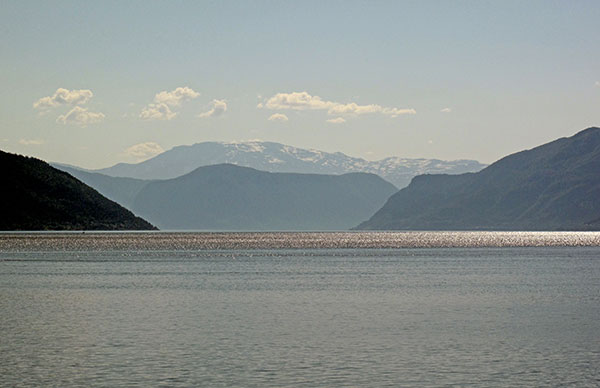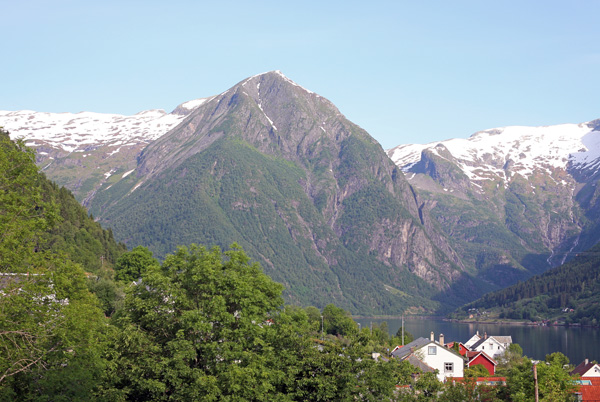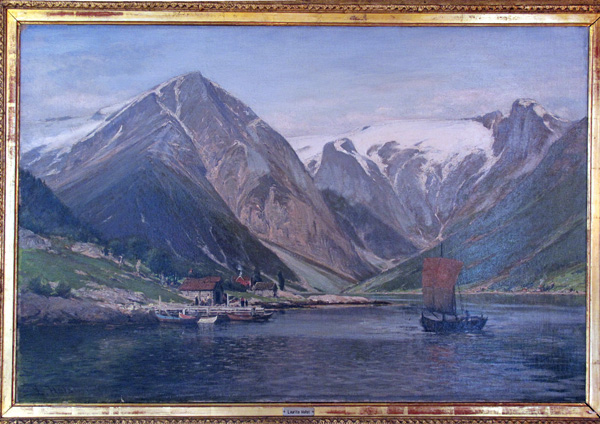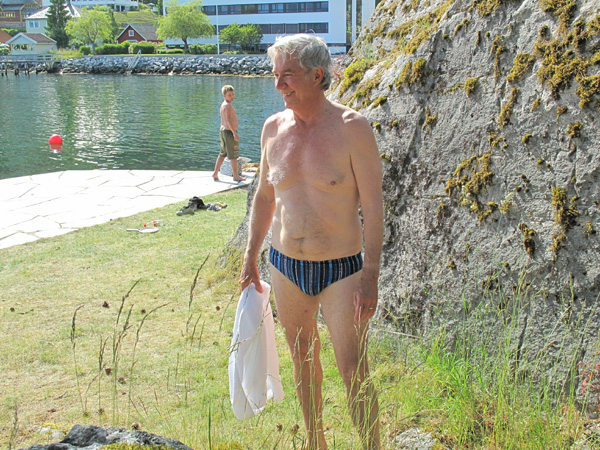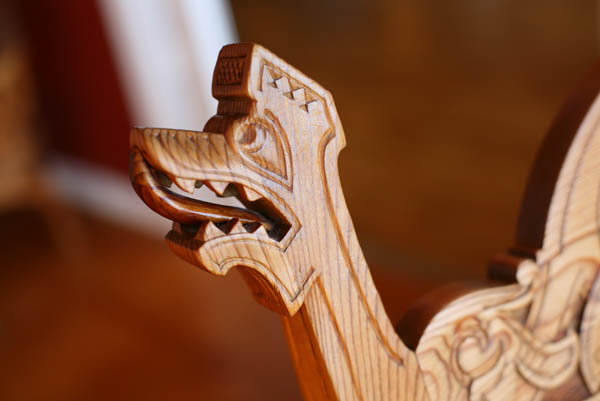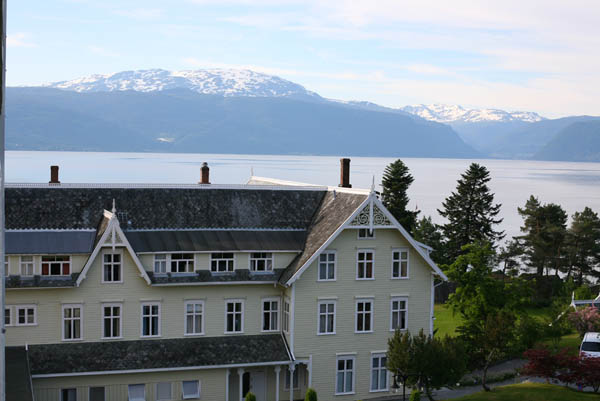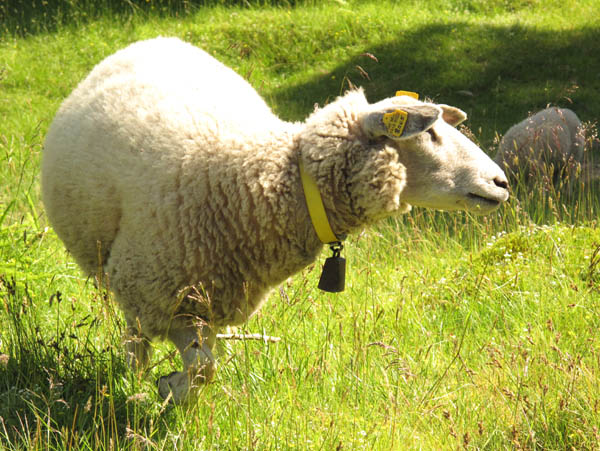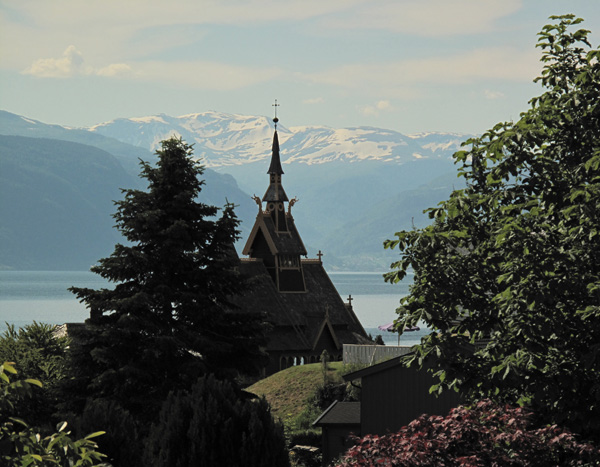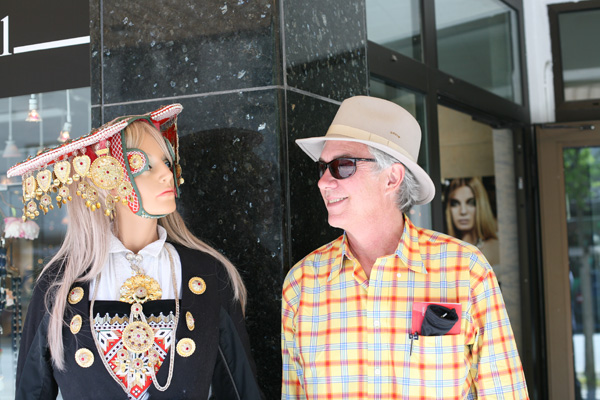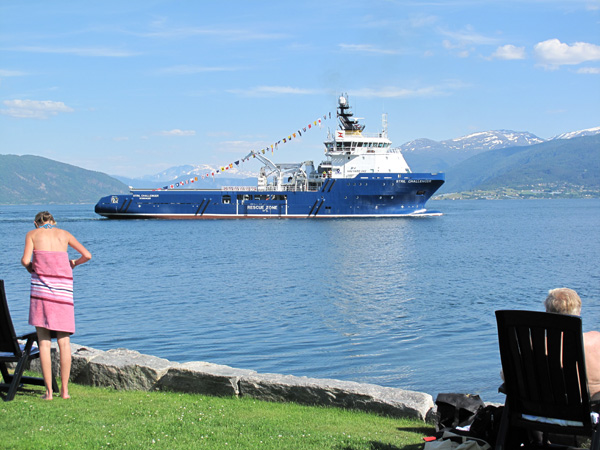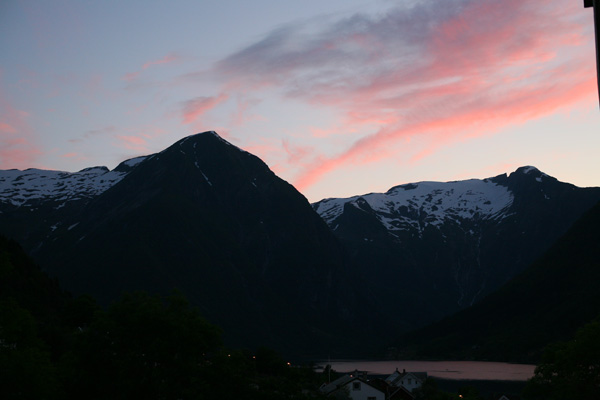July 1, 2009.
[ The following is the final installment from my perhaps-too-lengthy notes on a recent trip to Scandinavia.]
I’m sitting on a stoop in sunny Ålesund near a canal. The buildings in this neighborhood are in Scandinavian takes on the Art Nouveau style, more commonly called Jugendstil here. The style happened to be in fashion in 1904, when the town burnt to the ground and was rebuilt over just a few years.
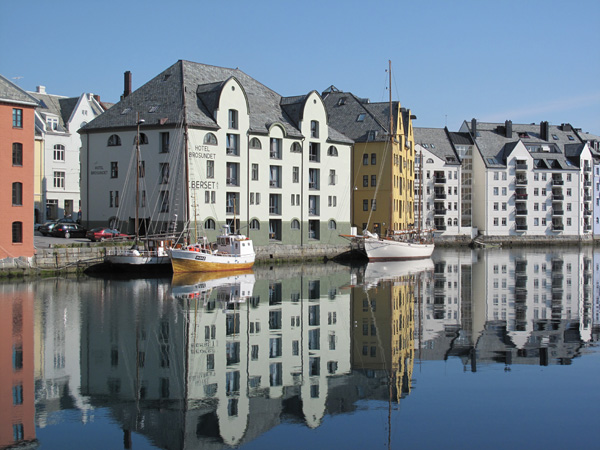
Nothing much on the agenda for our final two days—just wander around this pretty town. My credit card has stopped working—I guess the bankers are suspicious about the run of charges emanating from Denmark and Norway. But I don’t feel like phoning up the Empire’s bureaucracy to (maybe) straighten this out. Meanwhile my bank card is still able to extract kroner from the ATMs—which they call mini-banks here.
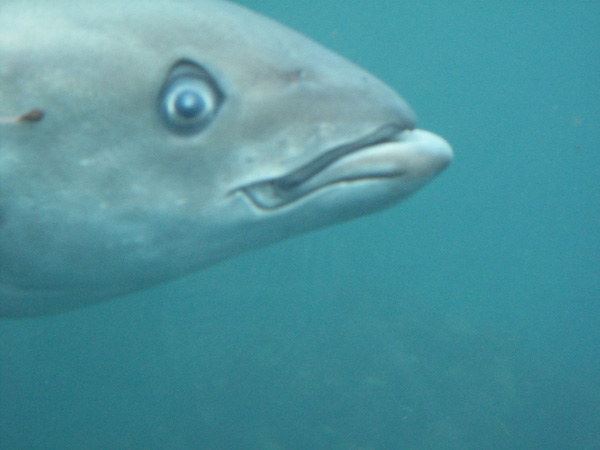
I’m in a bakery—I just had the best piece of pastry in years, a dry mille-feuille puff croissant wrapped around almond paste. To intensify the sensation, I pushed the whole second half into my mouth at once, then fell choking to the floor, knocking over my table and my chair—just kidding about that last part.
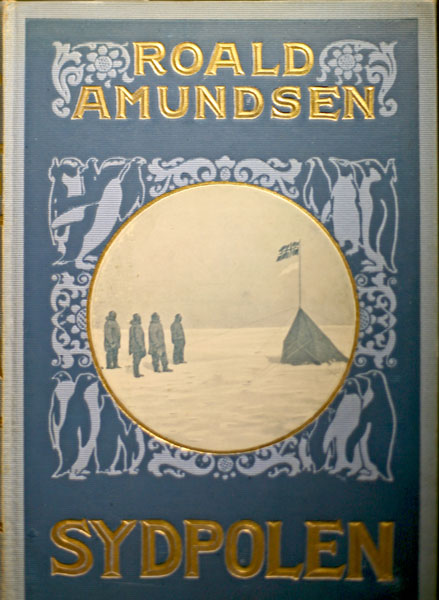
[Art Nouveau cover for a book by Norwegian polar explorer Amundsen.]
A baby in a carriage beside me is topped by the mound of a cotton-covered feather-bed comforter. All of the beds here have these fat comforters and no top-sheets or blankets. Given the unusual heat during our stay—70 or even 80 Fahrenheit—we’re hot at night, steaming in the midnight sun. Last night I saw the sunrise at 2 a.m. They have posters around town that mention the latitude—I think it’s 62 degrees.
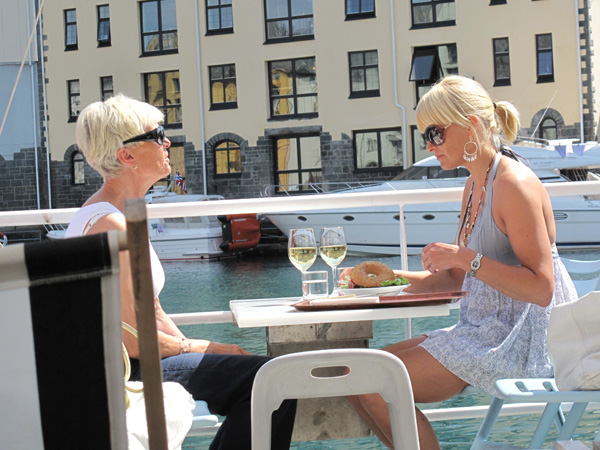
Quite a few of the Norwegian women have platinum blonde hair, fine and nearly white—I’m not sure I’ve ever seen women with this as their natural hair color. Some of the Norwegian blondes are punks with cropped hair, pigtails and tattoos. Others, more traditional, wear their forelocks in braids that they wrap around their brows in an old-school braid-crown. The Norwegian babies are tender and so fair.
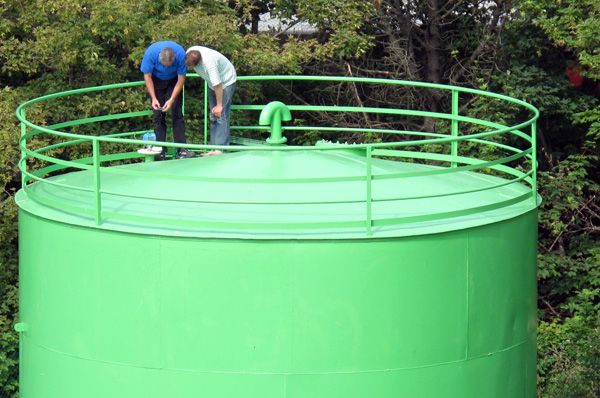
We were just in the library for some free email on their machines. It’s fun going into the public buildings of a town.
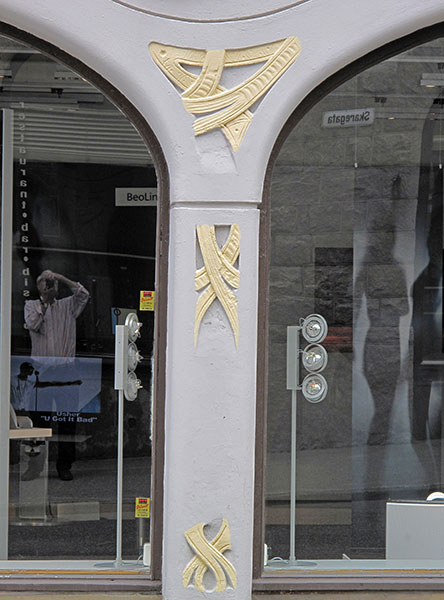
We walked around the shopping streets—with lovely Art Nouveau facades—but the insides of the buildings have been merged and hollowed out to hold an—aaack— mall that’s very nearly isomorphic to the Valley Fair mall in San Jose, only with H & M as their anchor store instead of Macy’s. But, ah, they do have that celestial bakery at the outer edge. I notice another pastry now—a cake with whipped cream reddened by cherries—they call it bloot cake, for “blood cake.”
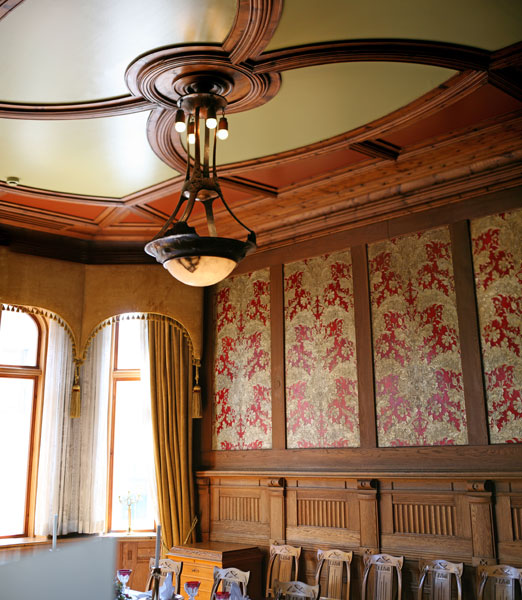
We tour the Jugendstil Sentrum (Art Nouveau Center), and see an interesting slide show about Baltic and Scandinavia versions of this international style—it was big in Finland as a means to express a romantic nationalism directed against Russian dominance. I bet something like Art Nouveau will be big again, when advanced tech and new materials make possible a return to custom craftsmanship. The museum spoke of this one Jugendstil room as a work of “total art,” in which every detail is designed to act as a voice in the ecstatic chorus of the whole.
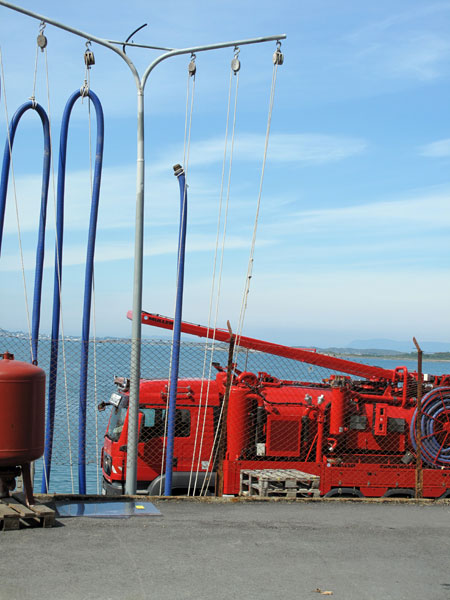
Looming over the town is one of those fat cruise starships that we saw before, The Jewel of the Sea, filled with alien invaders of a sort, that is, my fellow countrymen. This morning they tied up at a wharf a block from our hotel.
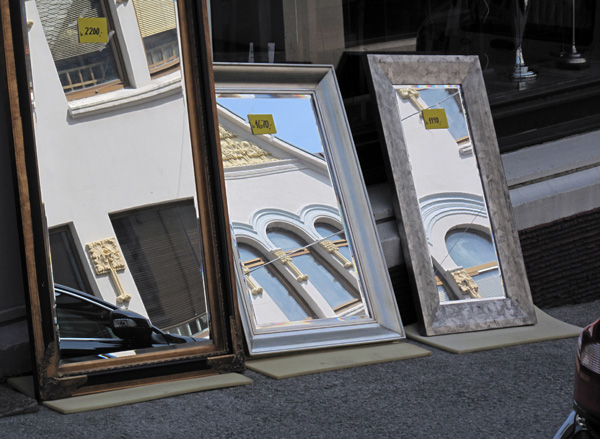
“I’m not one of them,” said the bespectacled, well-heeled alien, his face suspiciously tan and un-Norwegian. “My wife and I came here on public transport from Alpha Centauri, just like you natives do.”
“Oorck!” cried the rabble of pale street urchins surrounding the intruder. “Oorck, Oorck!” The first stone struck the alien square upon the forehead. He tottered and fell…
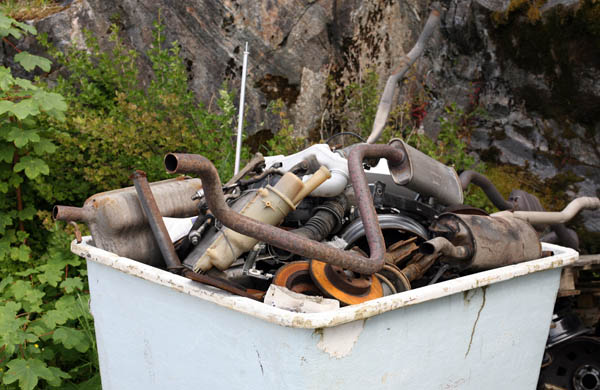
I bought a souvenir Norwegian wool cap, absurdly overpriced, but one of a kind (I’d like to think). It has tassels on it.
Tomorrow we go home, we already scoped out the spot where the airport busses leave. It’s a little sad to see the vacation end. I would have liked to visit Stockholm as well—but my legs and body are cumulatively fatigued after two and a half weeks of touring, also it feels like time to halt the gushing outflow of cash.
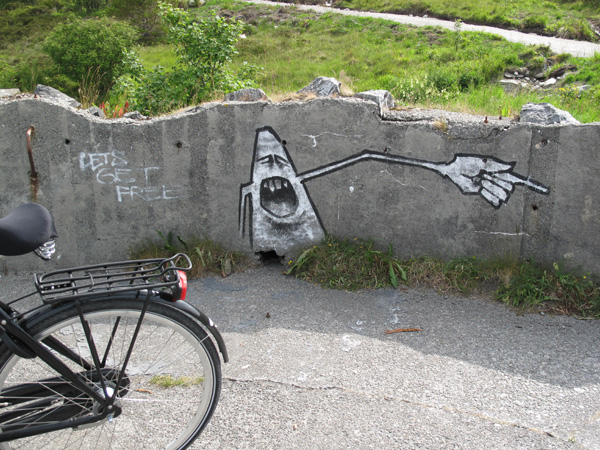
It’s been great. Takk for alt.









